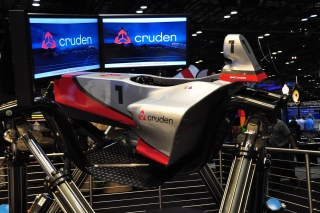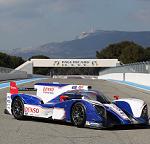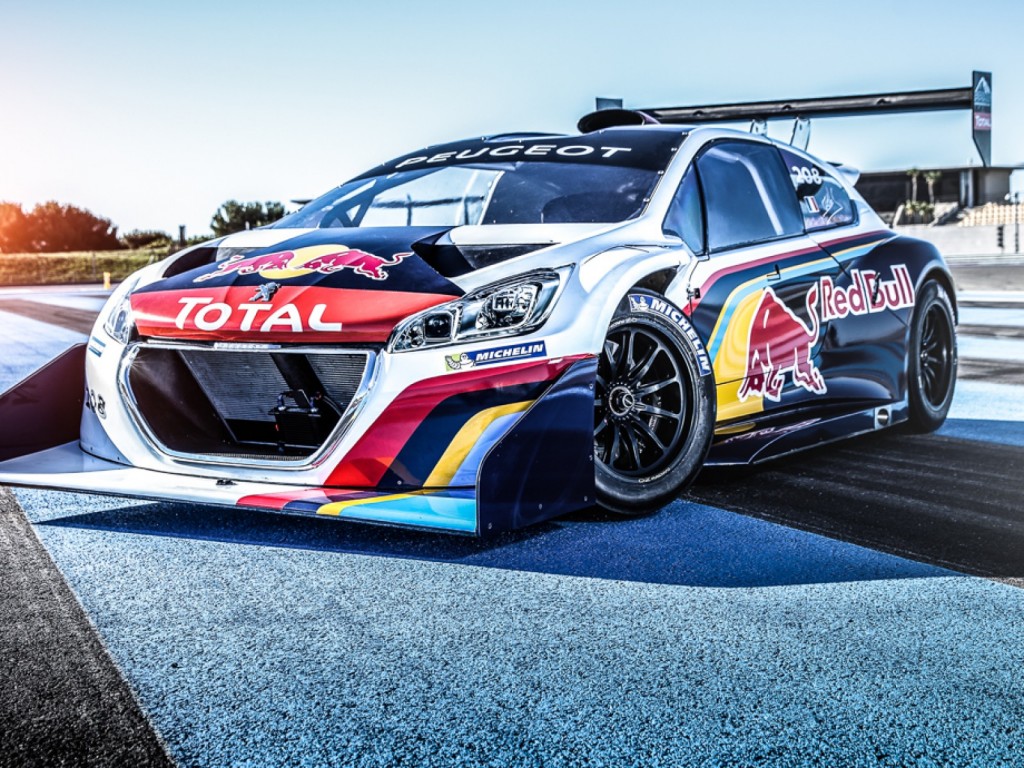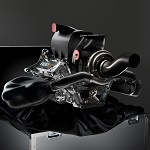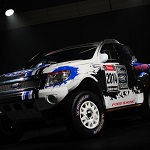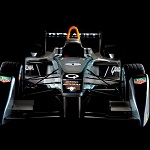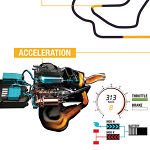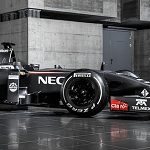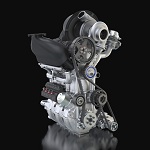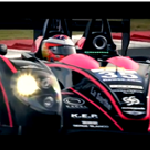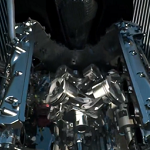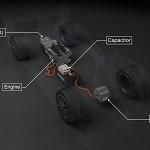Artist @jlord8 renders a new version of the Buick luxury car from the late 20th century into a sleek car ready to take on Dodge’s best.
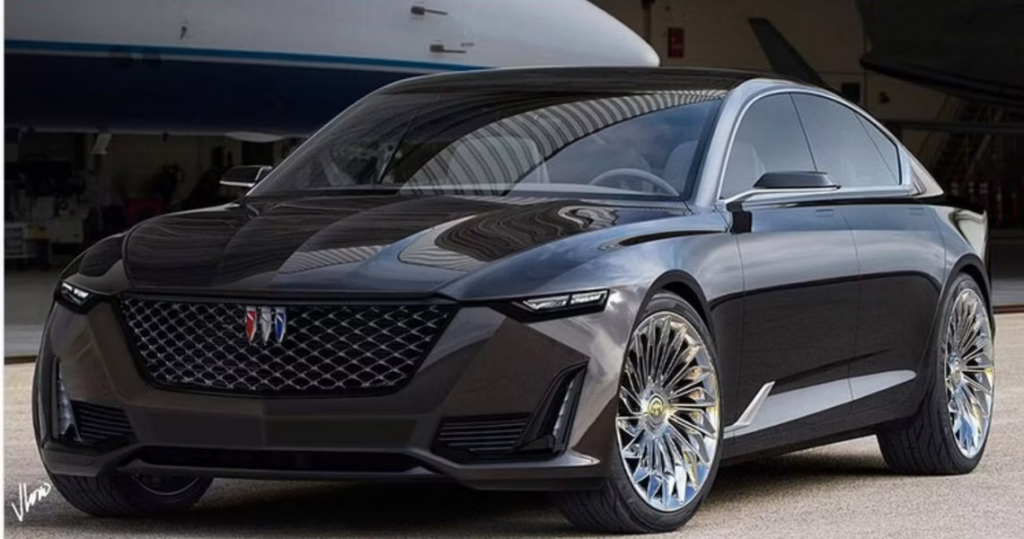
Once known for its luxurious, comfortable cars, the Buick brand has evolved to a portfolio of vehicles that hardly resembles what the brand was as recently as the 2000s. With a lineup of exclusively crossovers in the United States, Buick still offers a wider model lineup in China that includes many of the roomy sedans that once defined Buick’s identity here in North America.
For those that prefer a luxury sport sedan over a crossover, a recent render by graphic designer @jlord8 of a familiar Buick nameplate, the Park Avenue, is sure to awaken your appetite for forbidden fruit.
Buick Park Avenue Render
The Park Avenue render uses the Cadillac Escala concept car as a base. The concept dates back to 2016 and is Cadillac describes it as: “A commanding presence that is both revolutionary and unmistakably Cadillac. The Escala Concept not only previews our future innovation and design direction, but signals the revival of true American luxury.”
The Escala unsurprisingly inspired many of the design elements of upcoming Cadillac models at that time. Notably, the Cadillac CT5 and Cadillac CT4 heavily draw design language from the Escala.
While we don’t know the engine choices for the render, the car should have no problem fitting GM’s supercharged V8 under the hood. This would make it a worthy 4-door opponent against the Dodge Charger Hellcat.
In this render, @jlord8 uses the attractive concept car to re-imagine Buick’s flagship sedan of the ’80s, 90s, and early 2000s. The concept utilizes Buick’s updated, sharper logo, sleek front headlights, and darkened front grille.
Notably absent are the heavy chrome design elements that typically define Buick styling. The sedan has a sleek, coupe-like c-pillar design that slopes at the rear of the car which the single image on Instagram does not fully reveal.
Forbidden Buicks: Park Ave Render and Wildcat Concept

The render has a low stance and a dramatic design. It also has a general appearance that would make it fit well within the luxury sedan market of modern times. Given that the Escala served as a basis for existing Cadillac sedans, it isn’t unrealistic to believe Buick could build a similar car should they choose to.
Buick has not offered a sedan in the United States since the departure of the Buick LaCrosse full-size sedan. With that in mind, the last generation Regal offered in the United States didn’t fit a traditional sedan’s definition with a sportback opening similar to the Volkswagen Arteon, Kia Stinger, or Audi A5.
While Buick currently offers only small and mid-size crossovers in the United States, the brand did recently reveal the Wildcat concept, an EV-imagined coupe with sharp lines and dramatic styling.
The concept, like this render, offers a glimpse into a hypothetical present or future where Buick remains a player in the sport or luxury sedan segment. For now, sleek luxury sedan buyers will have to stick to offerings from Acura, Lexus, or GM’s own Cadillac.
Here’s Why Gearheads Should Seriously Consider Buying The Genesis G70 Sports Sedan
Like all rides from Genesis, the G70 is ultra-stylish, modern, and a ton of fun to drive with its 3.3-liter twin-turbocharged V6 engine.
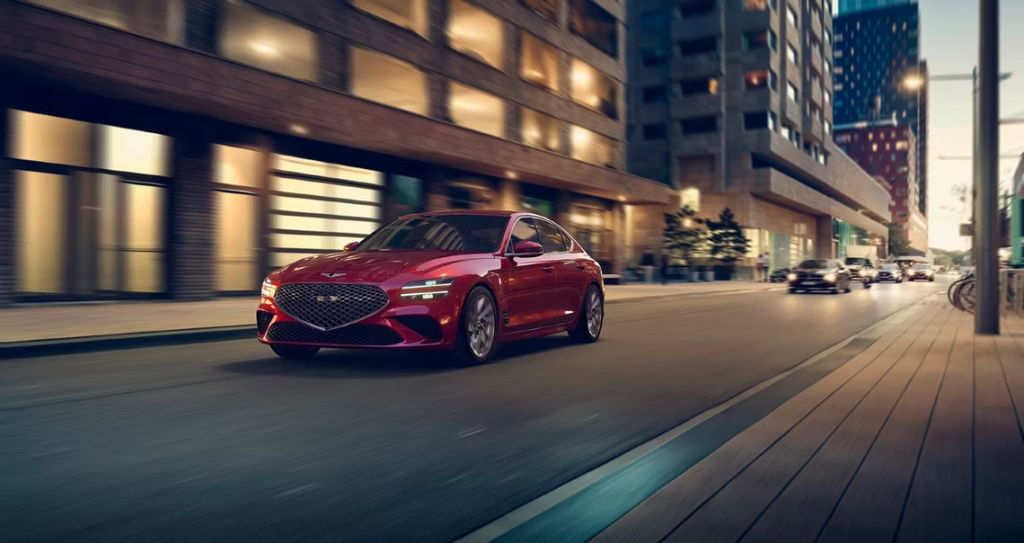
Genesis is an automaker that, although not the most well-known, has a reputation for incredible luxury vehicles. Of all the models, one of its most recent successes is the Genesis G70, which came along for the 2017 model year. Since then, it has gained high marks from critics and drivers alike. One of the great things about the Genesis G70 is that it has many options to suit various needs.
The Genesis G70 is a swift option for the luxury market that can keep up with some of the best. This aspect of the Genesis G70 Sports Sedan makes it the perfect ride for gearheads.
The 2023 G70 Sports Sedan lives up to the supreme reputation of Genesis. People trust this company, and this car is simply the latest example of why people from all walks of life should consider buying a Genesis G70 for their next vehicle. This is particularly true for gearheads, as it’s an incredibly fun and fast car.
Here’s why gearheads should seriously consider the 2023 Genesis G70 Sports Sedan.
The 2023 Genesis G70 Sports Sedan Has An Engine Built For Speed

The 2023 Genesis G70 Sports Sedan is a pretty impressive vehicle regarding performance. The car comes with multiple engine options. However, the one gearheads will be most interested in is the 3.3-liter twin-turbocharged V6 engine. According to Genesis, this trim of the 2023 Genesis G70 has a maximum output of 365 horsepower at 6,000 rpm and a torque of 376 ft-lb at 1,300 rpm – 4,500rpm. This engine set up for the 2023 Genesis G70 comes in either an all-wheel-drive or rear-wheel-drive, and the transmission on this car is an eight-speed automatic with shift-by-wire and paddle shifters.
The 2023 Genesis G70 is fast regardless of which trim you choose. According to reports, the car accelerates from 0 to 60 miles per hour between 5.8 seconds and 7.9 seconds. Are there faster options on the luxury market? Sure, but this one is awesome inside and out and makes an excellent option for gearheads. In addition to being a pretty fast car, the Genesis G70 is relatively fuel efficient. According to the automaker, it can go 18 miles per gallon in the city. For the highway, that figure is 27 miles per gallon. This leads to a combined 21 miles per gallon. In an age of constantly changing fuel prices, a fuel-efficient vehicle is an advantage for anyone.
The 2023 Genesis G70 Sports Sedan Has A Spacious Interior

Of course, not every gearhead needs a spacious interior. This is one of the reasons why sports cars are so prevalent in this community. However, extra space in a car that can perform well is rarely an issue. This additional space is also one of the many reasons the 2023 Genesis G70 is so great. With this car, there is more than enough room for friends and family to spread out for long road trips. There is also a great deal of cargo space for storage. There have been reports of up to 5 suitcases fitting in the truck of this car.
Beyond the extra space, the interior of the 2023 Genesis G70 has an upscale look. According to the automaker, one of the biggest reasons for this is the Quilted Nappa seats, which include a diamond pattern. Buyers can also choose to make the front seats ventilated. In addition, they can also add heated front and rear seats to their package.
The 2023 Genesis G70 not only has a relatively large interior, but it’s a beacon of style and elegance. This is a vehicle where the inside perfectly captures the essence of the upscale client. The inside of this car is both sophisticated and modern, while also being the perfect example of the type of luxury vehicle a gearhead would want. Buyers can also see this with the available aluminum trim with the sport pattern. Gearheads will like this because, while beautiful, this is a straightforward pattern.
The New Genesis G70 Comes With All The Technology Gearheads Need

Regarding technology, the 2023 Genesis G70 has what you need without going overboard. The car comes with a standard 10.3-inch touchscreen display located on the dashboard. This system works with Android Auto and Apple Car play. Besides this, the interior of the car is traditional regarding technology. It has several knobs for things such as audio and climate control. It also comes with a rotary gear shifter, which, while not everyone’s cup of tea, many people like this style of changing gears.
Genesis is a relatively new automaker, as the company officially started in 2007 with its first official vehicle. Since then, the company has produced many great rides, with the new 2023 G70 being just one of them. This is a car that people are talking about because it’s a genuinely great option, especially for gearheads. Like all rides from Genesis, the G70 is ultra-stylish, modern, and a ton of fun to drive.
10 Things We Can Expect From The 2020 Genesis GV80
Hyundai unveiled the impressive GV80 concept as a fuel cell vehicle two years ago. Here’s everything we can expect from the new model!
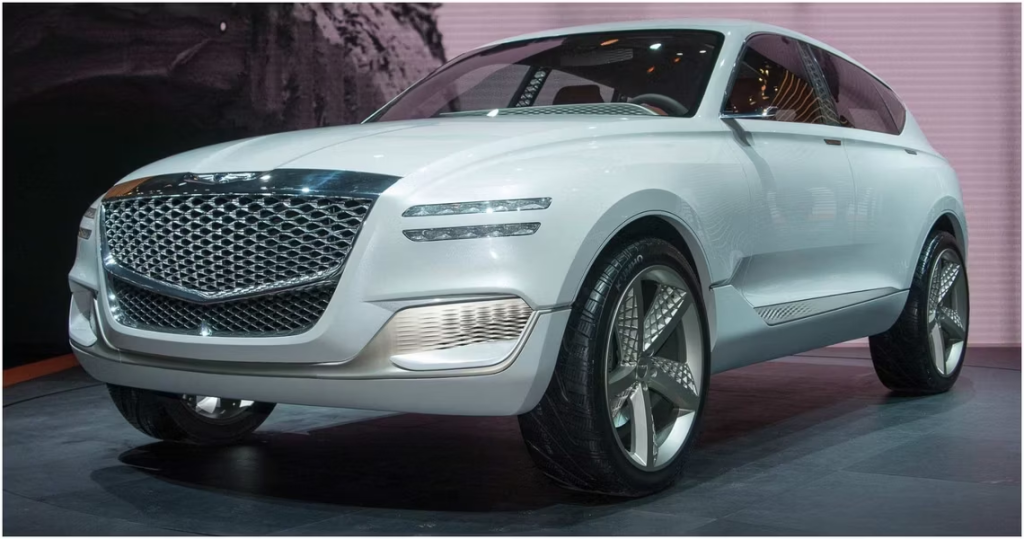
Marketed under their luxury brand Genesis, Hyundai unveiled the impressive GV80 concept as a concept fuel cell vehicle two years ago, at the 2017 New York Auto Show. Today, rumors are circulating that we might expect the full production version of the car as early as next year, featuring some of the most advanced technology features on the market.
If the new GV80 lives up to the hype, we might see automakers such as BMW and Mercedes-Benz struggle with Hyundai for dominance in the luxury SUV department. To find out how much we know about the GV80 thus far and what we can expect from the production model in the future, keep reading.
10. It will compete in the midsize luxury SUV segment

According to thekoreancarblog.com’s size specs, the GV80 will fit right into the luxury midsize SUV segment, facing off competitors such as the Mercedes-Benz GLE, the BMW X5, and the Audi Q7. The GV80 will hence boast roughly 16.2 feet in length, and about 5’6” of height.
Luckily the size will be paired with powerful engines and Genesis’ trademark upscale leather-clad interior, featuring multiple touch screen panels (the concept shows panels available for back-seat passengers as well) and a many comfort and technology features. To find out which, keep reading.
9. Its Design Will Be Largely Based On The 2017 GV80 Concept

The new GV80’s test prototype was allegedly spied at the Nurburgring track, confirming the model will indeed be highly based on the concept car presented at the 2017 New York Auto Show.
And though its defining design features (such as the Quad LED headlight and taillights and and camera side mirrors) are truly captivating, it’s not unreasonable to expect them gone in the actual production version of this modern SUV.
8. It Will Feature Many Similarities To Successful Genesis Models

In making the GV80 appealing to the consumers, Genesis is likely to use the same recipe for success as in their amazing G80 and G90 models which currently stand firmly at the top of their segment.
A larger and more robust SUV in the Genesis lineup, the platform the GV80 will use may very well come from the G80. And as both the G80 and the new super luxury G90 offer either a RWD or an AWD system, we can safely expect the new GV80 SUV to do the same.
7. Powertrain

According to the Korean Car Blog, the new addition to the genesis lineup will come in a 2.5L delivering 304 horsepower and a 3.5L putting out 380 hp. We can expect these engines to be readily available options for the US market. But that’s not all, with the current G80 and the flagship G90 using the 420-hp 5.0L V8, there’s a good chance that Genesis will be inclined to endow the GV80 with the same 420-horsepower engine option.
If this will be the case, the GV80’s engine will also likely connect to a 8-speed automatic transmission. That said, it may take a short while before the GV80 transitions to a hybrid or electric powertrain, or even the concept’s hydrogen fuel cell technology.
6. A Diesel Engine Alternative Has Been Confirmed

Aside from the regular petrol engines announced by the Korean Car Blog, the GV80, diesel-heads will likely be able to also choose an optional 3.0L inline-six diesel engine producing a decent 276 horsepower.
However, it’s not clear whether this engine will actually make it into the US market as of yet. Fuel economy has always been one of the only real issues in Genesis luxury cars, yet no models yet offer a diesel alternative for the US market. Perhaps this is one of the changes the GV80 will instate.
5. It Will Probably Feature Hyundai’s New State-of-the-art Noise Cancelling

Apart from the awesome-looking quad LED headlights and taillights we’re all hoping for, we might see the GV80 debut Hyundai’s new and improved noise-cancelling software for an even more luxurious cabin experience.
The technology detects any road noise and negates it with inverted sound waves and will target each passenger of the car individually, no matter where they are located in the vehicle.
4. Progressive Infotainment And Gadgets

The cool 22-inch infotainment screen we saw in the 2017 concept will unfortunately probably not make it into the production model.
In fact, latest spy shots of the production prototype show a different but still impressive dashboard-mounted touchscreen panel. The images also provide us with a view of the new large rotary shifter, digital speedometer, and more.
3. Interior

Since we now know that the production version of the GV80 won’t stray far from its concept revealed at the 2017 New York Auto Show, the interior might take a lot of inspiration from it as well. However, like is the case with most major car manufacturers, the GV80’s cabin is likely to resemble its luxury sedan sibling, the G90, which has just recently been revealed with a new and attractive facelift.
With that in mind, we’ll probably see options with wooden accents and leather upholstery surrounding the cabin. However, the model’s prototype spy shots showed a much different interior than what the concept car promised. Whether that will be the case remains to be seen.
2. Pricing

As of yet, the GV80’s pricing remains a mystery. The Genesis’ flagship SUV will command on the market will depend highly on its features.
But, using its main competitors such as the BMW X5 and the Mercedes-Benz GLE as a reference, we can throw out a decent guess that the price is going to revolve around $50,000 for the base model. Of course, with optional features, we can expect that number to rise by at least 50%.
- Release date

Officially, the GV80 still remains in the concept phase. Yes, we’ve seen images of test models but no official information has been provided by the company about the GV80’s debut.
We can, however, expect the car to make a grand reveal at one of the upcoming motor shows. Currently (November 2019), all rumors and reports indicate that Genesis plans to debut the car sometime in the first quarter of 2020 for that same model year.
10 Of The Most Reliable Six-Cylinder Engines Ever Made
We’ve witnessed many incredibly six-cylinder engines over the years, and these are the most reliable of the lot.
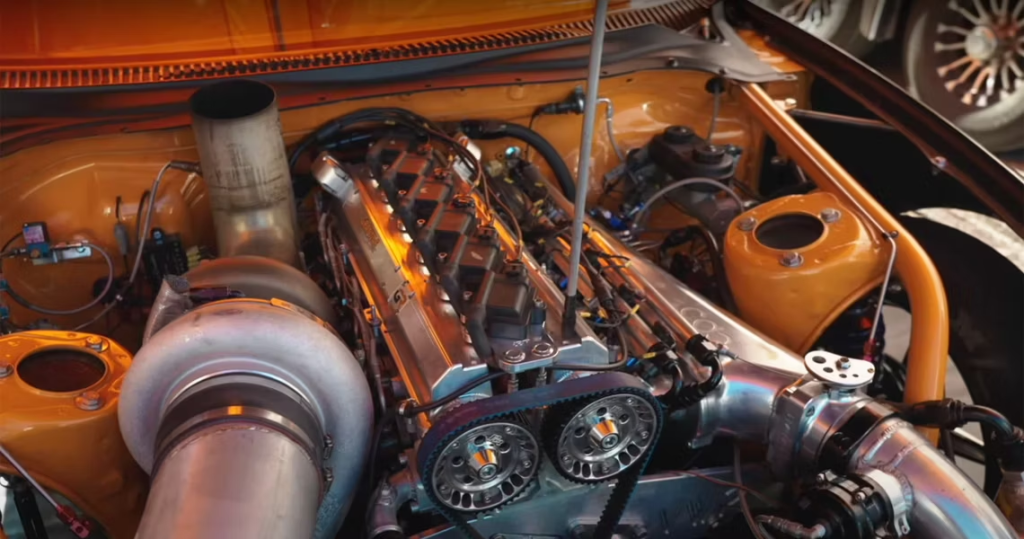
Six-cylinder engines first powered pre-World War I aircraft long before they gained popularity in the automotive sphere. BMW, a manufacturer with a well-publicized love affair with inline-six engines, built some incredible war-and post-war time six-cylinder aviation engines, which later found their eternal home in the automobile. But BMW wasn’t the first automaker to use six-cylinder engines in vehicles. Spyker introduced the 60-hp Racer in 1903 with a straight six powerplant. After World War II, the first V6 engine debuted with the Lancia V6 featuring under the Lancia Aurelia’s hood in 1950. So this engine type has a timeless heritage under its belt.
Six-cylinder engines deploy clever and efficient designs to draw smooth power, and they have been the heart of some of the greatest vehicles of all time. The straight-six and V6 engine configurations have their distinct advantages and disadvantages. There are fewer straight-six engines in new vehicles today since manufacturers seem to prefer turbocharged V6 motors offering V8 performance levels. But, some manufacturers like BMW relent with their inline-sixes, so they both have their place. We’ve witnessed many incredibly six-cylinder engines over the years, and these are the most reliable of the lot.
10. Ford 300 Inline-Six – Ford F-Series Trucks

The ford 300 straight-six is easily one of the greatest engines ever built. It featured in the legendary Ford F-Series trucks for three decades and proved a trusted workhorse for nation builders, from farmers and construction workers to loggers. It came with a big 560lbs iron block that proved practically unkillable.

The engine has seen plenty of abuse through its application in millions of farm pickups, tractors, wood chippers, irrigation pumps, etc. It rarely broke down; on average, many Ford 300 engines run as much as 300k to 400k miles.
9. Jeep 4.0 Inline-Six – Jeep Cherokee, Wrangler, Wagoneer

Although Jeep engines are still pretty good, they aren’t among the most dependable based on third-party reliability reviews. Still, Jeep vehicles have featured some solidly reliable motors in the past, including the Jeep 4.0 inline-six. Jeep built the 4.0 between 1986 and 2006, first by AMC and then by Chrysler after the 1987 takeover.

The Jeep 4.0 powered the Jeep Cherokee, Wrangler, Wagoneer, Jeep Comance, and Grand Cherokee. It didn’t put out much power, but its design was simple and provided longevity and reliability. It will keep running long after the rest of the Jeep has rusted away.
8. Jaguar XK6 Inline-Six– Jaguar D-Type, E-Type, XK120

Jaguar built the XK inline-six DOHC engine from 1942 to 1992, and it went on to earn reverence for powering iconic road cars and race cars. It underwent constant evolution and improvement through its 43-year run, coming in five displacements between 2.4 and 4.2 liters. Jaguar deployed the XK6 on some of the fastest cars in its day, including the Jaguar XK120, E-Type, and the Le Mans-winning D-Type.

The XK6 earns praise for its raw power, smooth delivery, and unmistakable soundtrack. These engines were as high-spec and reliable as Jaguar could manage, with claims of some over-engineered aspects.
7. 12 Valve Cummins 6BT Inline-Six – Dodge Ram Trucks

The turbocharged 12-valve Cummings 6BT engine is arguably the world’s most famous diesel engine. The six-cylinder powerplant first appeared in the 1989 Dodge Ram pickup truck and soon replaced monstrous V8s thanks to its ability to provide massive low-end torque and improve fuel consumption.

The engine gained a cult following thanks to its tremendous performance potential and bulletproof reliability. The cast iron cylinder block and head are impeccably durable, and the rest of the engine is extremely simplistic, operating mostly with mechanical components and few electronics.
6. Chrysler Slant Six Inline-Six – Chrysler Cars, Trucks, And Vans

Chrysler’s 170, 198, and 225 Slant Six series was arguably the most durable inline-six engine ever built. They built it between 1960 and 1983 with a deep-skirt block and tall-short pistons, which proved extremely reliable. Its slant nature earned it the popular moniker “leaning tower of power.”

The Slant six remains one of the most rugged and reliable powerplants that proved tough to kill, never stopped running or wore out, and rarely needed repairs. It is common to find engines that run hundreds of thousands of miles long after the rest of the car have rotted away.
5. Nissan RB26DETT – Nissan Skyline GT-R32

At the height of the JDM car craze of the late 80s, Nissan produced the RB26DETT straight six, which proved to be one of the most solid power mills out there. It came with 276 hp stock in the early models but can take high abuse levels. It forms a sturdy modification foundation, and many custom examples produce over 1000 ponies. This family of engines powered iconic Skyline cars from the R32 to the R34 GT-Rs.

Many consider the tin turbo RB26DETT an engineering marvel built for high performance. It has proven incredibly durable with good maintenance.
4. 3M Inline-Six – Toyota 2000GT

The Toyota M family included cast-iron block engines with aluminum cylinder heads built from the 1960s to the 1990s. It came in four-cylinder, six-cylinder, and eight-cylinder iterations that underwent several evolutions before Toyota rested the series. The 3M naturally inline-six was a special engine built from 1967 to 1971 for the legendary supercar, the Toyota 2000GT. Yamaha took the original M’s block and built custom aluminum heads with a hemispherical shape and 79o valves.

Today the 2000GT is one of the most valuable and iconic Japanese cars ever, thanks partly to the durable 3M engine under the hood. It instantly proved its sturdiness when it set thirteen FIA records for endurance and speed after undergoing a 72-hour test at the Yatabe proving ground.
3. Honda J35 V6 – Honda Accord, Odyssey & Ridgeline

Everyone recognizes Honda for its consistent appearance on top of reliability lists. They’ve built several screaming and bulletproof four-cylinder powerplants alongside dependable V6s like the J-series, the brand’s go-to engine in North America. It powers everything from the sporty Honda Accord coupes to the Ridgeline pickups and Odyssey minivans.

The SOHC J35 V6 offers silky smooth power delivery with quick revs and notable VTEC changeovers. Also, it comes with bulletproof reliability, making it one of the greatest V6 engines, which is why it has been going strong since 1996.
2. Honda C30A/C32B V6 – Honda/Acura NSX

The C-Series is yet another notably reliable engine from Honda. It was the brand’s first production V6, built in various iterations between 1985 and 2005. The C30A and C32B were the most complex and costly variants, so Honda reserved them for the Honda and Acura NSX sports cars.
While it has nothing exotic by modern standards, Honda’s engineers seriously crafted the flagship engine to fit the luxury car V6 status of the mid-engined NSX. The hand-built C32B engine proved a timeless and solidly reliable engine to personify Honda’s quality engines.
- 2JZ-GTE Inline-Six – Toyota Supra

Toyota has built some incredible, including the high-revving Lexus LFA’s V10, but their 2JZ-GTE inline-six engine found on the A80 Supra is among the most desirable. For over twenty years, the 2JZ proved nearly indestructible. Toyota built it for enthusiasts, making it a legendary powerplant in the tuner community.

It has been subject to some of the most outrageous mods in the automotive world, and some of its applications output as much as 2000 hp without blowing up. Even with moderate upgrades, you can get up to 750 hp from the cast-iron block.
20 Six Cylinder Cars That Put V10s In The Dust
With more advancement in the way engines and cars are built, the six cylinder engine is now able to leave many V10s in the dust
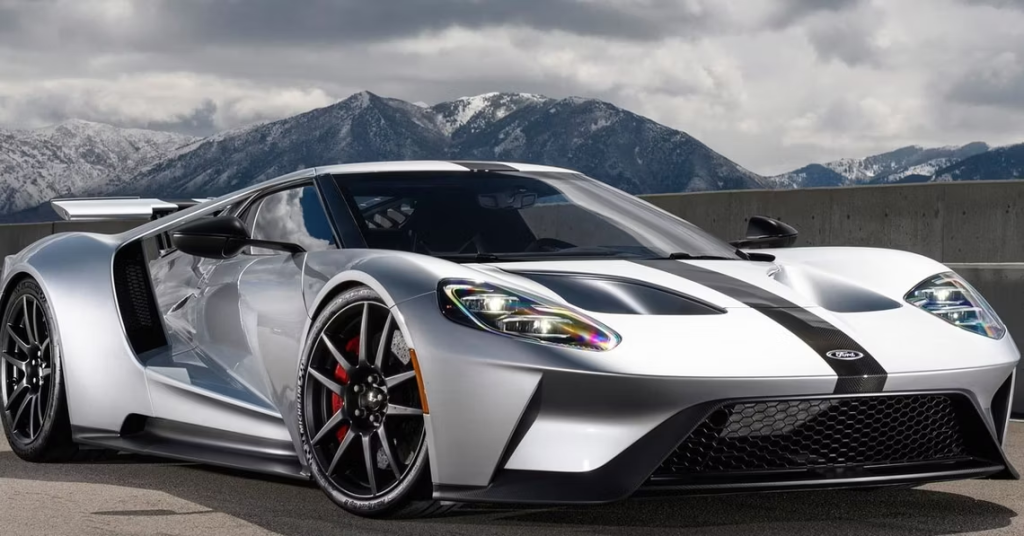
The more we progress into a world of environmental consciousness, the less and less we see cars being built with V8 engines. The V8 has been a staple in the American automotive world for decades. We took it for granted, perhaps not knowing that it eventually had to go. Automakers are more and more turning to six cylinder engines to take the place of the old V8s. And for the most part, they aren’t as bad as you think they are. Most modern six cylinder engines are reaching outputs of over 300 horsepower, while at the same time being pretty fuel efficient.
Ford in particular has shown us what a six cylinder engine is capable of, especially when you hook a couple of turbochargers to it. Though the turbos do cut down on the fuel consumption a little bit, the turbocharged six cylinder engines have a snappy response to acceleration that a V8 can only dream of, especially right off the line. Yes, the era of the V8 is probably over. There will be a few hold outs as trucks, muscle cars, and SUVs will probably hold onto their V8s for dear life. But eventually they will become obsolete.
The six cylinder engine will be triumphant over the V8 as the best choice for those who want both power and fuel economy in the future. Each is unique and great in their own way, they are all from different era. (Both modern and from model of the past). Here are a few examples of how great a well engineered six cylinder powered car can be.
20. Lotus Evora

In the recent past, Lotus has struggled to remain a prominent auto manufacturer. In the world of ever growing car companies, the small manufacturer has had to become a bit creative when it came to developing their cars. Lotus has never had a reputation for reliability.
In order to tackle this issue, Lotus reached out to Toyota for help with their powertrains.
The Lotus Evora is powered by the same V6 engine as the Toyota Avalon, but with one big difference. Lotus supercharged the V6! Which means that the V6 in the Evora is pumping out 400 horsepower! The Evora might be the perfect combination of Japanese quality and British sports car handling.
19. Jeep CJ

There aren’t many cars that are as iconic than the Jeep CJ. Endlessly customizable and just as versatile, the Jeep CJ has been the darling of car enthusiasts for decades. During the 1970s and 1980s, AMC was building the Jeep CJs with a truly legendary straight six engine. The Jeeps were obviously not the fastest cars on the road, nor were they the most fuel efficient. But the Jeep CJ was a car that could definitely take some abuse. With lots of low end torque, the Jeep straight six engines were the perfect engines for any off roading adventures.
18. Volkswagen Corrado

The Volkswagen Corrado was one of the most interesting Volkswagen models to come out of the 1990s. It was the spiritual successor for the Volkswagen Scirocco. Initially the Corrado was equipped with a four cylinder engine, but later, the infamous VR6 made its way into the Corrado.
Volkswagen engineered the VR6 to be very narrow so that it could fit into compact cars like the Corrado and the GTI.
Not only was the Corrado an exceptionally handling car, it was powerful too. Pumping out nearly 200 horsepower, the Corrado VR6 was a worth competitor in the compacts sports car market.
17. Nissan GT-R

It’s hard not to talk about the Nissan GT-R without the words “amazing” or “astonishing.” When the GT-R was born it stomped not only the cars in its price range, but cars that were three times its price. Producing upwards of 600 horsepower from its 3.8 litre V6 engine, the GT-R managed to do what many Italian thoroughbreds like Ferrari and Lamborghini could barely do. Built in a completely sealed lab in Japan, the GT-R was meticulously built by hand. According to Top Gear, this was because the GT-R was too complicated, and Nissan’s standard of quality too high, for any machine to produce.
16. Porsche 911

Few cars in the history of the world have been able to build the reputation for themselves quite like the Porsche 911. The 911 is a car that nearly defies the laws of physics. Taking inspiration from the original Volkswagen Beetle, the engine of the Porsche 911 is in the back on the car. In fact it is practically hanging off the back end of the car. Not only does this make handing interesting to say the least, the hanging issues are magnified by the power the car was given. But German engineers don’t give up, Porsche has worked meticulously to make the 911 work. After half a century of engineering, Porsche can proudly proclaim that they have one of the best handling cars in the world.
15. Alfa Romeo Giulia

The Alfa Romeo Giulia is a flawed car. It’s as simple as that. The doors are too narrow for a full grown adult, the infotainment system is flawed, and its electrical system gives you the feeling that it was designed and assembled by amateurs.
But even with all of that, the Afla is one of the best cars on the market.
Why? Its incredible powertrain. The Alfa’s 2.9 litre, twin turbo V6 will produce a mind blowing 505 horsepower. That’s an incredible amount of power for a relatively small V6. We all know that the car is flawed, but the smile it puts on your face when that engine does what it is supposed to do will make up for any shortcomings that car has.
14. BMW M3

The BMW M3 is the stuff automotive dreams are made of. A German car with a powerful engine that will stomp anybody that dares challenge it. The BMW’s twin turbocharged, inline six cylinder engine has become a legend in the automotive world, and has been the staple for BMW’s performance line. Producing over 400 horsepower, the BMW M3 will shoot from zero to sixty in under five seconds. Think of the BMW M3 as the choice for people that are driven by sense. Rather than the people buying the Alfa Romeo, who are driven more by emotion.
13. Acura NSX

Even though the Acura uses a hybrid powertrain, the Japanese supercar still takes most of its power from the twin turbocharged, 3.5 litre V6 engine that sits inside its engine bay. Combined with the hybrid power, the Acura NSX will produce powers upwards of 500 horsepower.
That’s a lot of power no matter how you look at it.
Combined with its segment dominating handling and fastidious build quality, the Acura NSX paves the way for hybrid supercars of the future. Make no mistake, other manufacturers will take note of what Acura is doing with the NSX and implement them in their future cars.
12. Jaguar E-Type

I’ll just say it, the Jaguar E-Type is the most beautiful car that has ever been produced. Period. Hands down. According to Jaguar, even Enzo Ferrari himself said that the Jaguar E-Type was the most beautiful car he had ever laid eyes on. With it’s low sweeping body, and long nose, the E-Type has an astonishingly beautiful aerodynamic design. The Jaguar E-Type was initially powered by a 3.8 litre six cylinder engine, and a 4.2 litre six cylinder engine. Both produced over 250 horsepower and would take the E-Type up to its top speed of 150 MPH. Which for the 1960s, was a big deal.
11. TVR Sagaris

Typically, British cars car refined and quiet. Keeping think like comfort and class in mind when they’re being designed. But the TVR Sagaris defies all of was the world typically think of British cars. Its brutish, unruly, and downright insane.
Powered by a 4.0 litre straight six engine, the Sagaris produced over 400 of the rawest horsepower possible.
When driving the car it felt like all of those horses were no ordinary horses, they were wild mustangs. According to Jeremy Clarkson, the Sagaris, “goes like stink.” Zero to sixty happens in less than four seconds. That’s astonishing for a car that cost less than $60,000 new.
10. Ford GT

In the spirit of the originally Ferrari fighting LeMans race cars of the 1960s, the Ford GT proves that the same manufacturer that builds cars like the Focus and Fiesta can build something astonishing. According to Car and Driver, Ford has tweaked and upgraded the six cylinder engine out of the F-150 to produce an amazing 647 horsepower! Combined with the light-weight body and huge tires for maximum grip, the Ford GT can go from zero to sixty miles per hour in six seconds! It also has a top speed of over 200 miles per hour.
9. Jaguar F-Type

Taking inspiration from the E-Types of the 1960s, the Jaguar F-Type that is not just beautiful, but show stopping gorgeous. The Jaguar has both V6 and V8 variants. With stats of nearly 400 horsepower from the V6 Jaguar, it almost makes you wonder why anybody would even bother getting the V8.
The F-Type aims to take down competition like the Porsche 911 and the Nissan GT-R.
What does it have other than a thumping good V6? It’s more comfortable, quiet, and refined than the competition. Its suspension doesn’t break your back like the GT-R, and it’s definitely prettier than the Porsche.
8. DeLorean DMC-12

Possibly one of the most recognizable cars from the 1980s, the DeLorean cars were powered by one of the most bizarrely co-engineered engines ever assembled. It was an American car, built in Ireland, with an engine that was developed by Volvo and Renault. Though the actual powertrain of the DeLorean left much to be desired, it is possibly one of the most interesting and iconic cars to ever exist. With its sleek body and gull wing doors, the design of the DeLorean fittingly looked like something out of a SciFi movie. It quickly found its way into pop culture and the hearts of the automotive world alike.
7. Ford Taurus SHO

The Ford Taurus SHO might be one of the best sleeper cars on the market. Hidden behind the skin of a average Ford Taurus, the SHO hides a secret. That secret being its 365 horsepower EcoBoost V6! The Taurus SHO is also equipped with larger brakes, a stiffened and sportier suspension, and an upgraded cooling system. The Taurus SHO is also equipped with all wheel drive, to make sure that it gets off the line as quickly as possible. All of this means that Ford not only gives the Taurus SHO the power, but also the means to use it.
6. Nissan Maxima

When it comes to an automotive segment, the Nissan Maxima sits in kind of a grey area. It is just as luxurious as cars like the Toyota Avalon, while at the same time being widely considered a sports sedan. The 3.5 litre V6 engine is fairly universal throughout the Nissan line up of models. But when that engine makes its way into the Nissan Maxima, it turns an average sedan into a sports sedan. Producing 300 horsepower, the Maxima will do zero to sixty in 5.7 seconds, not too bad for a full size sedan.
5. Chevrolet Camaro

In today’s modern muscle cars, a V6 is an important part of their line-up. All three of the competing muscle cars from the Big Three American Automakers have some kind of V6 option. But of the three, one stands out as the clear leader of the pack.
The Chevrolet Camaro is by far the most engaging of the three.
According to the New York Daily News, the Camaro shares its platform with the Cadillac ATS. Maybe that’s the reason why the Camaro feels sharper and more precise to drive than the other two. Plus, with its 336 horsepower 3.6 litre V6, the Camaro has plenty of power to put that suspension to work.
4. Kia Stinger

Of all the auto manufacturers in the world, nobody really suspected that Kia would produce a powerful sports sedan. But the Kia Stinger is just that! The Stinger is a traditional muscle car. With a front engine, rear wheel drive layout, the Kia stinger is ready to go up against any “sports car.” According to Kia, with its 365 horsepower V6, the Stinger will accelerate from zero to sixty in 4.7 seconds. Which is faster than the BMW 440i, Audi A7, and even the Porsche Panamera V6. Not to mention it starts out under $40,000. The Porsche doesn’t come any less expensive than $85,000.
3. Buick Park Avenue
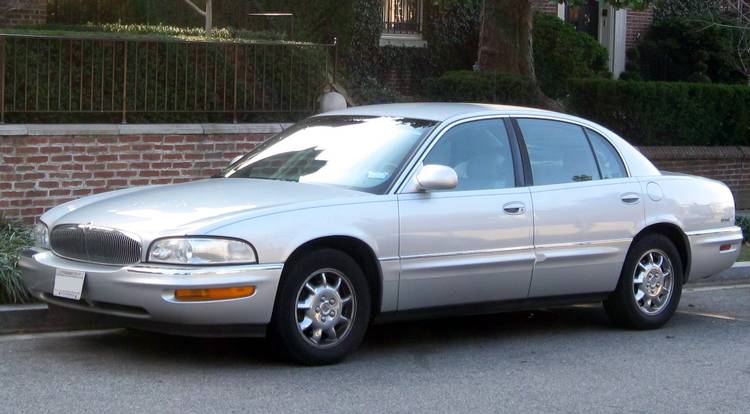
During the 1990s, Buick was the largest volume selling luxury brand in the United States. At the time, it was a fairly well deserved title. The Park Avenue was one of the most luxurious cars in the Buick lines up. Believe it or not, the Park Avenue Ultra was powered by a 240 horsepower, 3800 series General Motors V6. Believe it or not, the Park Avenue Ultra was actually given a sportier suspension to go with that Supercharger. I mean, as sporty as a Buick could get. That 3600 V6 was nearly bulletproof, making the Park Avenue a powerful, reliable, and comfortable cruiser.
2. Renault Alpine A310

During the 1980s, everybody had sports car fever. Cars like the Lamborghini Countach became icons of the decade. This made the wedge shaped car the go to design for anybody who wanted to build something fast and powerful.
French automaker Renault was eager to jump on this bandwagon.
They introduced the Alpine A310 as their mark on the sports car market. Believe it or not, the Alpine used a variant of the same Volvo and Renault designed V6 that DeLorean used in their cars. The difference between the two was that, unlike the DeLorean, the Alpoine was fast. Reaching speeds of 140 miles per hour, the Alpine was a very fast car for its era.
- Audi RS4

According to Car and Driver, when the first generation Audi RS4 was released, it was the most powerful production Audi to date. Its 2.7 litre, Cosworth developed, twin turbocharged V6 produced 375 horsepower. The RS4 would shoot off the line like a sprinter, jumping from zero to sixty miles per hour in 4.9 seconds. The RS4’s top speed was also limited to 155 miles per hour. In the same era that 200-230 horsepower was typical for a V6 engine in a production car, the RS4 showed that even your family wagon could be wicked fast.
Sources: MotorTrend, Car and Driver, Autotrader, Top Gear, Road and Track

